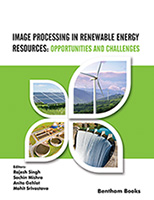Introduction
Systematic Architectural Design for Optimal Wind Energy Generation is a handy reference on the aerodynamic architectural forms in buildings for optimizing wind energy conversion processes. Chapters of the book cover the basics of wind energy generation and building design that make them more conducive for generating wind power, and in line with sustainable energy design goals.
Key Features:
-7 chapters organized in a simple, reader-friendly layout.
-A learning approach to the subject that highlights key concepts in architectural science and wind energy physics.
-Introduces readers to the application of computational Fluid Dynamics (CFD) tools to visualize and simulate architectural forms under wind actions.
-An objective focus on architectural forms is presented, including the role of the form in optimizing wind energy conversion and the negative effects of wind on certain forms.
-Covers the building and positioning of different types of wind turbines.
-References for further reading.
Systematic Architectural Design for Optimal Wind Energy Generation is an essential reference for students of architecture at all levels, professional architects, as well as readers interested in green building design, renewable energy, and sustainability studies that pave the way towards proactive environment-friendly solutions.





